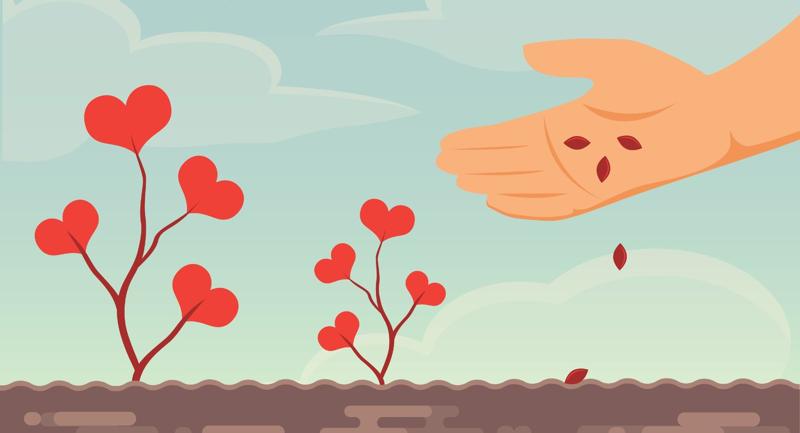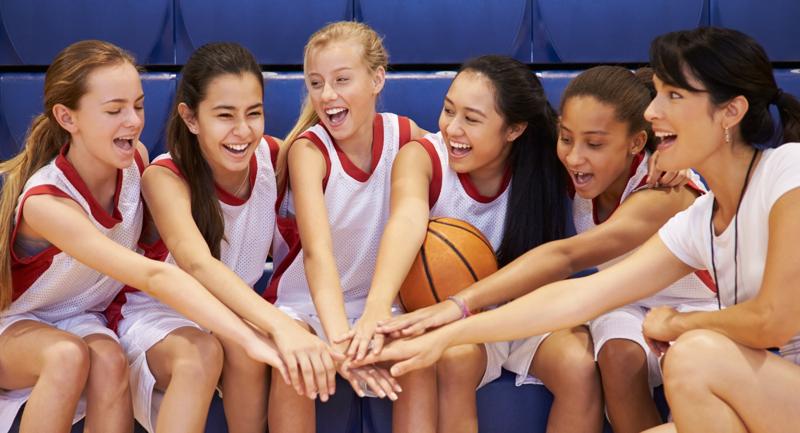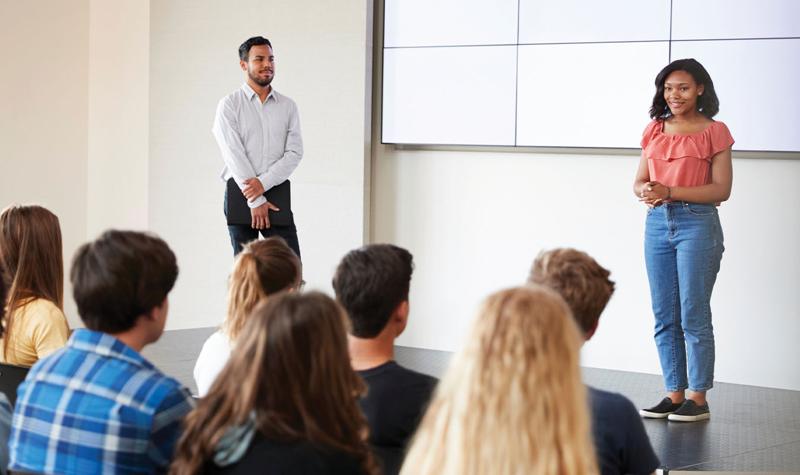I’m an English and English as a second language (ESL) teacher at one of Philadelphia’s most diverse schools, Horace Furness High School. Our school is successful. We’re also a neighborhood school, which we define as a school that admits students living within its neighborhood or “catchment.”
Historically, neighborhood schools in Philadelphia are second-class schools. They’re commonly where you go when you don’t get into the special admittance public schools; they don’t require high standardized test scores, auditions, or interviews. A student might attend the neighborhood school if they didn’t get into a charter school or their family doesn’t have the means or desire to pay for private school. Some students and parents say they worry about the dangers of attending a neighborhood school.
Our neighborhood school is changing that way of thinking. Students, faculty, staff, and administration want to be there. In the past, our school was in danger of closing because of poor attendance, and a modest number of students enrolled. Test scores were dismal, and parts of the building were closed off. Recent years have seen an upswing. Our attendance is growing. The district has been renovating our building. All classrooms are in use. Teacher turnover is low. The support staff is overwhelmingly kind, caring, and helpful. Even those all-important standardized tests are slowly improving. Our school is no longer labeled with corrective action, a designation that requires specific changes to improve achievement.
What happened to cause these improvements? If you’re looking for one particular person with a vision or a consultant with a specific curriculum and platform, you won’t find that here. This growth happened because we now consistently provide quality instruction in a safe and caring atmosphere—one where teachers have time to work together and students are empowered to take charge of their own learning. Our administration team, faculty, and staff ensure that all decisions serve student growth. We understand that although the state measures standardized test growth, that growth only happens when students feel heard, respected, and safe enough to be open to learning. Here are the guiding principles that drive this bright spot in education.
A Culture of Asset-Based Thinking
We’re a multilingual and multicultural population. You might hear 10 native languages spoken in a class, and not only in ESL classes. Many students make meaning through translanguaging— that is, they use multiple languages to communicate and understand information as they learn content knowledge in English. Teachers are encouraged to use culturally responsive instruction. Many are certified in ESL.
Because our students are so different from one another, they’re more accepting of and more curious about differences. Socially, students initially stay in language groups, but we often have mixed language groups. You frequently hear students ask each other, “How do you say that in your language?” Most groups can find commonalities around sports, food, and fun.
Growth only happens when students feel heard, respected, and safe enough to be open to learning.
Modeling Positive Reinforcement
Our school also handles discipline problems differently, depending on the context. Zero tolerance is an antiquated term. We investigate inappropriate behaviors, and we have restorative practices in place. We encourage and model positive reinforcement and interactions. We discourage minor issues, such as uniform violations and lateness, by encouraging students to take pride in their school and education. Many students wear t-shirts that say “Furness Pride.” We have moved from a “no hoodies” rule to creating our own Furness hoodie. We have climate staff and administrators who meet with students who are chronically late to create individual plans for improving tardiness; these plans might include providing students with an alarm clock or with a daily attendance report.
Adjustments to school policies are team efforts, and some of those teams include students and teachers. For example, we have a teen court and a Senior Student Mentor Program. Teen court takes cases of individual infractions. Other students provide resolutions and advocacy in teen court under the moderation of a veteran teacher. Student Council contributes to multiple areas of school community growth. They include student committees that engage in every area of school growth, from monitoring our school gardens, to managing school dances and events, to creating groups to help immigrant youth feel safer. Counselors play an important role in addressing student needs. There is one for every grade level, and they make themselves available to help guide students through positive decision-making. Bilingual counselors are on call to help bridge the various gaps that come up daily between school and students or home. There are college counselors to guide students into life after high school. Critical problem solving takes place at every level.
Student Engagement
At our school, students pass state tests. Many take advanced placement (AP) courses, attend universities, and have successful lives. According to the Future Ready PA Index (2025), during the 2023–24 school year, 43.5 percent of students at Furness High School participated in an AP course and 59.9 percent of students transitioned successfully to postsecondary schools, the military, or work. School-based teacher leaders and principals run reports of students’ data, and teachers analyze it with them to find needed areas of growth. Teachers consider thoughtful ways to relay this data to students so there is no mystery about where students stand academically. We identify gaps through data and create plans that involve all stakeholders. Teachers rely on our relationships with students to encourage them to take learning and assessment seriously.
Our alumni are involved in the school and often return to visit and help out in multiple ways. You might find them at our Asian New Year celebrations or giving tips to seniors about college applications. We strive to support their personal growth and success and prepare them to be good citizens and care for our world.
Students experience personal growth working with peers in the classroom, in clubs, and in extracurricular activities. The school community becomes interwoven with their personal growth as teens try on new identities and stakeholders authentically encourage students to figure out who they are so they can be successful.
Hiring teachers willing to work together—and then giving them the time to do
so—is crucial to a successful school.
Family and Community Involvement
It’s crucial to reach students on multiple levels when teaching a diverse student body. At Furness, we communicate through teachers, social media, school news media, announcements, flyers, community meetings, first languages, student council members, emails, and phone calls.
When it comes to communication, teachers, principals, and staff understand that our relationships with students, built on mutual respect, yield the most results. For example, teachers or student leaders might reach out to a soccer-loving student to let them know there’s a tournament coming up. Or, if teachers learn of a student whose family may be getting citizenship documents, we let them know we have a law service professional visiting the school. Teachers also reach out to our more introverted students to tell them about summer programs that might interest them. Then we take it a step further by connecting the students to the programs or people who can help them be safe, have fun, and succeed. Teachers get information in a weekly newsletter and daily email, and we recently added a public relations committee to our student council to increase student awareness of the multiple resources available to them.
Bottom line, we talk to our students, not as large groups, but as individuals with specific needs. This helps them feel like there’s a place for them and that they’re valued.
Building Teacher Practice
Our teaching at Furness is a practice and a collaboration. This collaboration is evident when our district gives us a new curriculum. We try it out in our classrooms and measure it against what we know is true, against what we have learned from our backgrounds in education theory and our decades of experience in the classroom. Teachers have space to examine how education theories play out in their practice. In teachers’ professional learning communities (they meet for 45 minutes daily to discuss student learning), they discuss what’s working, what’s not, and what actions to take to get students back on track. Hiring teachers willing to work together—and then giving them the time to do so—is crucial to a successful school. When teachers check and balance one another respectfully, students benefit.
We understand that our relationship with students, built on mutual respect, yields the most results.
Collaboration Between Teachers and Administrators
Collaboration is a word that is bounced around in many educational settings. What does it look like in a successful school? People communicate. When teachers have an idea about implementing a lesson, we’re excited to share it. Colleagues show support. When we come upon information that explains how particular students learn or don’t learn, we share that, too. We know that what works for some teachers and some students won’t work for others. There’s never a one-size-fits-all solution.
There is also kindness among teachers and principals. Principals support teachers so learning can occur. Our principals are sympathetic to our physical and mental needs; they’re never threatening, and they never make us feel as though they’re trying to make our job harder. They’re transparent and direct. For all these reasons, teacher turnover is not high in our school.
Being a teacher means making thousands of small decisions every minute, like giving extra time to some students or not, allowing a student more or less leeway with certain behaviors, or letting a portion of your planning time go in favor of greeting a colleague or a student who came to your room. There are also curricular decisions about which novel to choose, which math strategy to focus on, or who to turn to when a student is in crisis. And that’s just the tip of the iceberg. Support for teachers is more than a buzzword in a good school. It’s a necessity. Teaching results from many hours of preparation. It’s not lost on us that we have a crucial job to do and that our society’s future rests on young people’s ability to have various skills. But we can only do this job well when we feel supported—and we get this support from one another.
Students Do the Learning
Paulo Freire’s point about students not being machines in which we deposit learning is well taken at our school. We don’t open up our students’ brains and pour in knowledge. We give them strategies to practice emerging skills in an environment where learning means messing up and trying again. Students must do the heavy lifting. We’re there to guide them through classroom activities that engage them culturally and give them multiple opportunities to show what they’re learning. Students give presentations, make videos, and create art, podcasts, and games to show what they know. As peers view and comment on their learning, they foster learning communities.
We consistently group students with peers who are different from themselves to mirror the real world, where working with people of various backgrounds is a skill and a necessity for surviving and thriving. Students also have the opportunity to learn with peers of similar backgrounds; this enables them to feel comfortable with their identities as they grow into adults.
We also encourage students to lead and create. During our field days, for example, you’ll see student-created obstacle courses and physical games. Groups of students operate the games, teaching others how to play and calculating scores to determine winners. Groups of students create and lead events every few weeks, inviting the school community to attend.
We encourage performance-based digital projects so students can showcase their work to their peers. Although every classroom may not have students’ written work displayed on the walls, you can catch displays on the digital classroom walls. This is where students do gallery walks of one another’s websites, videos, and podcasts. For example, to build background knowledge for a unit that takes place in the 1920s, one group of students created a website about the Harlem Renaissance. In Socratic seminars, students may tackle such themes as how people view beauty over time or how they can create or stop evil. In the course of these projects, or other means, students support one another, learn how to communicate for a purpose, and master the relevant academic standards. They sometimes share their performances, debates, speeches, and presentations with the school community. This approach works for one very important reason: students want to be in school and they want to do well. This is the result of our culturally responsive instruction, which is embedded in our school community.
That One Great Idea
If there is one crucial idea that school administrators can apply for their school to be successful, it might be this: help students feel at home and supported. All members of a school community should be leaders in some way at some point. Listen to teachers and students and then make choices based on what you hear them say. When we have a strong community, we can master any curriculum.
Reflect & Discuss
➛ How does culturally responsive instruction foster a sense of belonging and acceptance?
➛ How has collaboration among teachers, administrators, and students influenced your school’s overall success and culture?
➛ What lessons learned from this successful neighborhood school might you apply in your own school or district?









